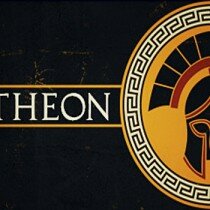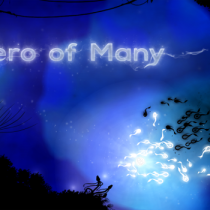It’s about time I wrote something, isn’t it? Get something out before the furore of Dragon Age and Far Cry reviews when the world at large gets their hands on them. Because while November is the busiest month for gaming we’ve seen for a while, there’s more than just the big name games coming out to play.
I was given the opportunity to review Trove as it was entering its open beta. I will readily admit that my first impressions of the game were fairly neutral. Among them were “Well this is basically Minecraft, isn’t it?” and “Why haven’t I heard anything about this game before?”. Let’s look at those questions, in what I won’t be calling a review: since the game isn’t actually finished, that wouldn’t be fair. Take everything you read with a pinch of salt, but read on if you’re keen to find out why this game gets a glowing recommendation.
So let’s get the basics out of the way first. Trove is, according to its own website, a “voxel RPG set in a massive universe of online worlds”. What this boils down to is that, from the outside at least, it appears very similar to Minecraft and its many, many clones. Developed by MMO veterans Trion Worlds – best known for RIFT and Defiance – Trove is a free-to-play PC-only title, which focuses on three main gameplay elements: exploration, building and adventuring. More Minecraft vibes, yes? Well you’re not wrong, but there’s more to Trove than that.
Take one of those first points for a start: Trove is an MMO in all but name. From the moment you start the game, you’re thrust into a constantly online world, full of other players. You have XP, levels, classes and the ability to customise your appearance, all available after a short tutorial level. Information is given to you in the form of in-game signs, which do an adequate job of explaining the ins and outs of how to play to the average gamer.
You have two discreet modes while playing Trove. By default, you are in full-on adventure mode, able to wield your class abilities freely. There are several classes available, though you’ll be spending real money to get access to them. Yes, there are “micro-transactions” available here, though many of them are anything BUT micro. A pack of Credits will set you back anywhere from £4 to a whopping £79. There are also a number of pre-set “packs” available, which offer bundles of in-game goodies to those with the cash. Most of these items are cosmetic, but a number of them will offer a huge saving in time.
While Trove is definitely not “pay to win”, you’re not going to get any argument from me if you say that you probably need to pay to get the best experience. That was clearly the intention of the developers going into this, however, so they can’t exactly be faulted with wanting to make money from their otherwise F2P title. Take for example the classes: two of them are free from the outset (Knight and Gunslinger). The two are radically different in design and playstyle, allowing the player enough diversity to feel like they’re getting more than Minecraft offers right away.
The Knight is your typical hack and slash character, but with a few extra tricks that he develops as you level. You can Smash and Charge your enemies, eventually obtaining the ability to shield and heal yourself. The Gunslinger, on the other hand, does all of his attacking with a pair of energy pistols. His abilities include a charge shot, as well as being able to launch himself forward with a blast from his guns. Eventually, you gain a sort of universal speed boost, increasing your firing rate as well as movement speed.
Each of the other classes requires payment. Right now, there are three, all costing either 5000 of the in-game currency (Cubits) or 1050 Credits (which is the equivalent of just over £5, depending on your overall purchase). If you’re willing to pony up the cash, you can become the FaeTrickster, the Dracolyte or the Neon Ninja. The Trickster can bomb enemies with glitter, teleport and leave a clone in its wake and eventually summon a small army of phantom staves to distract and clobber foes. The Dracolyte has a small dragon pet who will (occasionally) breathe fire, while you are busy pelting enemies with explosive idols or eventually turning into a dragon yourself for a time.
But the majority of my time in Trove was spent playing as the last class: the Neon Ninja’s abilities are more about mobility. From the outset, you can perform a backflip that stealths you and increases your movement speed. Next, you gain the ability to dash-slash through your enemies, forward in a straight line, freezing them in place. The last ability turns your blade into something like a giant energy-bolt-shooting lightsaber, with predictable results.
After exiting the tutorial area, you enter the Hub World. From here, you can enter portals to different worlds, all with randomly generated enemies, dungeons and biomes. Different worlds are tailored to different level groups, but offer more or less the same sort of gameplay. While simple in nature, this sort of thing is what truly sets Trove apart from Minecraft. The sense of structure that is sorely lacking in Mojang’s creation is definitely welcome in Trion’s endeavour, offering much more incentive to actually go out and do stuff. The main rewards for doing so are loot and Cubits.
Cubits can be earned at a fairly slow pace in-game to begin with, but this quickens as you become a more expert adventurer. Loot, however, drops like candy from a metaphorical piñata, soon overwhelming your limited inventory space. This is where your Cornerstone comes into play and the crafting element of the game starts to shine. Instead of the fixed infrastructure of most Minecraft worlds, Trove chooses to allow you to carry your house with you. Dotted around every area will be plots of land that you can interact with, immediately warping your own personal house to that area. Here you can build your abode in whatever way you want, including the placement of various containers, tools and workbenches.
In all honesty, the crafting side of things held little interest to me and I tended to largely ignore it in favour of more adventuring. What little I saw showed great promise, though: a simple key click shifts your character into build mode, replacing your abilities with various blocks and inventory items. These can be placed with a left click or harvested (using lasers, of course) with a right. More complex crafts can be done at workbenches or other crafting stations, but the game eschews tools in favour of direct results. Being in beta, the number of recipes and outcomes is fairly limited, but this will expand in time.
The most important thing is that the game is insanely fun to play. In short bursts, I can see this being something I come back to over and over again. It has a vigor and life to it that Minecraft simply can’t match; the spiritual predecessor seems veritably dull in comparison. The only complaints I would level at it for the moment are that it is less than stable and lacking polish. The forums are rife with people experiencing issues, many of them related to latency. My own experience was tainted by bugs, too; on multiple occasions, I would be unable to use skills or interact with the world in any way, necessitating a client restart. The game is also short of finesse and clarity when it comes to interacting with UI elements. I’m willing to forgive these shortcomings, what with it still being beta, but too many games can get stuck in the rut of never improving once they start raking in the dough. Hopefully Trion show more sense, since they could well be on to a winner with Trove.
© 2014 – 2015, zero1gaming.com. All rights reserved. On republishing this article your must provide a link to this original post
About Chris Smith
A twenty-something gamer from the North-East of Scotland. By day, I’m a Computer Technician at a local IT recycling charity, where I fix and build PCs. Outside of that, most of my time is spent either sleeping or gaming, which I try accomplish in equal amounts.
•





